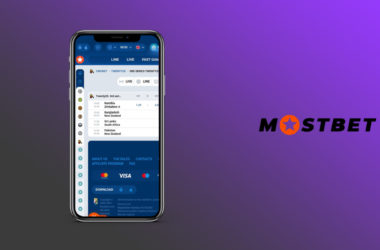Turnaround Time (TAT) is the time stretch from the time an interaction is submitted to the time the cycle is finished. It can likewise be considered as the amount of the time span sat tight for the memory or prepared line to show up, the execution on the CPU, and the info/yield to be executed. Turnaround time is a significant measurement in assessing a working framework’s planning calculations.
Techopedia Explains Turnaround Time (TAT)
In straightforward words, turnaround time is the complete time needed for an application to give the necessary yield to the client. According to the perspective of the group framework, turnaround time can be considered as the time taken for clump arrangement and printing of results. The idea of turnaround time covers the lead time and its inverse to the idea of process duration. Turnaround time is communicated as units of time for a particular framework state and in some cases for a given calculation. The turnaround time shifts for various applications and for various programming dialects.
- A few variables influence turnaround time, for example,
- Memory needed by the application
- Required execution time for the application
- Assets needed for the application
- working climate
Turnaround time is a significant segment in the plan of the chip, particularly for multiprocessor frameworks. Quick turnaround plans are liked by equipment configuration organizations, as they lead to quicker execution and registering speeds.
What is the turnaround time?
Turnaround time is the timeframe needed to do a specific interaction or job, from the second it is officially requested. Turnaround time is typically the time estimated from the finish of the solicitation and the accommodation of the solicitation for conveyance to the requestor.
Time’s Meaning Could Be A Little Clearer.
The term can be utilized much of the time in light of the fact that finishing a job is a typical event in the regular daily schedule. In business, most organizations need to realize their turnaround times for different exercises and sub-exercises. Lessening turnaround time for key cycles is a typical administrative objective as it builds effectiveness and consumer loyalty.
Ordinarily, this is a sort of execution metric. For instance, an organization may screen how the time of finishing and conveyance consistently creates from the time a client puts in a request.
So the organization computes the normal of all orders presented each month and examines how this time can be decreased. Thinking about the high contention and rivalry in the present business sectors, firms normally expect to finish the most basic cycles in the briefest measure of time. Let us know the new topic or concept is spooling. That is all you must know.
Models
Jilson Transportation is an organization that works in some U.S. Gives street transport administrations to numerous clients situated in the city. It works 25 trucks that convey tracking employee productivity from twelve ordinary clients to convey it to different organizations. Jilson’s top clients frequently requested a more limited turnaround time. This was estimated from the second they put the vehicle demand, to the time the merchandise was effectively gotten at their objective.
The organization acknowledged from the start that the turnaround time shifts from one customer to another as the stacking interaction is now and then drawn out and protracted in the customer’s stockroom. Jilson Transportation then, at that point fostered an undertaking for certain clients, which meant to decrease stacking times subsequently further developing turnaround times. The undertaking effectively diminished the stacking time by 25% and in general, it decreased the travel period by 10%.
More Limited Turnaround Time And Better Cycle Proficiency For The Protection Supplier
The overall protection market is developing quickly with wide potential across the globe. The changing affectability of clients is driving this interest. Protection suppliers are feeling the squeeze to robotize the assignment to lessen turnaround time and gain a strategic advantage.
Here’s the way Mindtree fostered a B2B application for a huge general protection adventure situated in the Middle East, which further developed turnaround reaction from financiers and expanded interaction proficiency.
The Test
The customer is an auxiliary of one of the biggest general insurance agencies on the planet. Their organizations utilize different applications that cooperate with one another and trade information. This mix was to a great extent manual and wasteful, which was a significant reason for concern.
Also, a portion of these applications had to facilitate issues because of lackluster showing and reaction times. This prompted an expansion in client to agitate and affected business and income.
Their B2B application had the scope of highlights like various open inclusion (MOC) issuance, multi-client office, supports, restoration cycle, and dashboard. This influenced the turnaround time for business clients like financiers and hindered the whole cycle.
Arrangement
Mindtree worked together with the client to lead a specialized review of the application and suggest a guide. We then, at that point held the applications and executed the review suggestions.
Mindtray planned specialized answers for computerizing and coordinate the various frameworks utilized by the client. Application type Vision and reaction times were improved by facilitating the application in the client’s geology and altering the application information base question execution.
Mindtree likewise suggested some business highlights like underwriting wiping out, open cover issue, numerous open inclusion, various client support, deal terms execution, overseer reference, and guarantee to warn.
A journal framework was executed, which included programmed assignment of errands inside the guaranteeing gathering to synchronize and normalize the subsequent cycle. This journal framework has become a significant differentiator for B2B destinations around here. Best practices and customized approaches were sent for prerequisites definition, collection, perusing, and prioritization which assisted us with conveying cutting edge arrangements.













